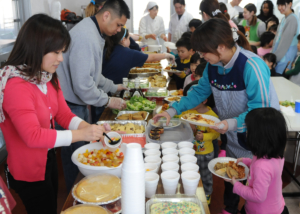 While Japan is one of the most developed countries in the world, the country has a pressing issue to solve — child poverty. According to a report by the Organisation for Economic Co-operation and Development (OECD), in 2017, Japan’s child income poverty rate stood at 16.3%, 2.9% greater than other OECD countries. To tackle this issue and meet the needs of children, some Japanese volunteers have set up children’s cafeterias in Japan, also known as Kodomo-Shokudo.
While Japan is one of the most developed countries in the world, the country has a pressing issue to solve — child poverty. According to a report by the Organisation for Economic Co-operation and Development (OECD), in 2017, Japan’s child income poverty rate stood at 16.3%, 2.9% greater than other OECD countries. To tackle this issue and meet the needs of children, some Japanese volunteers have set up children’s cafeterias in Japan, also known as Kodomo-Shokudo.
3 Facts About Child Poverty in Japan
- Single mothers face higher rates of household poverty. There is a link between child poverty and single parenting. In Japan, children from single-parent households tend to live in poverty because household incomes are relatively lower for this demographic and particularly low for single mothers. While this phenomenon is not exclusive to Japan, the country’s notable gender inequality between men and women is unusual for a developed country. In the World Economic Forum’s Global Gender Gap Report of 2022, Japan did not make it into the top 100 — it ranked 116th out of 146 countries. In terms of the gender pay gap, the average monthly income for female full-time employees stood at 251,800 yen in 2020 ($2,359) in contrast to 338,800 yen ($3,174) for male employees.
- Education links to poverty. There is a correlation between child poverty, parents’ economic status and education. Research shows that the lower a household’s income is, the less likely the parents are to prioritize and value the education of their children. This trickles down, and as a result, these children feel less motivated to continue their education. This continues the cycle of poverty as education is a proven path out of poverty.
- Child poverty is an invisible issue. In Japan, child poverty is an obscured problem. In fact, anything related to poverty tends to be hidden. “Fear of being seen as disadvantaged in a society that values the appearance of financial security means poverty in Japan is largely hidden from view,” The Guardian reports. As a result of the stigma associated with poverty, many impoverished families ensure in every way possible that their children have a well-to-do appearance. Consequently, this misleads others into thinking poverty is not a reality in Japan and has led to the government’s underestimation of the seriousness of child poverty.
A Solution: Children’s Cafeterias
To address the issue of child poverty in Japan, a vegetable shop owner, Hiroko Kondo, came up with a practical solution – children’s cafeterias. Kondo established the first cafeteria in 2012. The story goes: a primary school teacher told Kondo that a particular student “had only a banana to eat for the day besides school lunch because his single mother was sick.” After hearing this, Kondo decided to open a cafeteria for disadvantaged children in her neighborhood and offered them low-cost but nutritious dinners twice a month.
The Impact
Kondo’s initiative has inspired many volunteers in Japan, leading to an uptick in children’s cafeterias in the country. By 2019, Japan noted 3,718 children’s cafeterias, a 62% increase from 2018. Interestingly, every children’s canteen operates differently. For instance, while one canteen opens between 6 a.m. and 8 p.m. every Monday, giving free meals for children, another “opens from 5.30 a.m. and 7.30 p.m. on the first and third Wednesday each month,” offering 300 yen ($2.07) dinners for children and adults.
During the COVID-19 pandemic, many children’s cafeterias were able to keep their doors open. Some volunteers, however, changed the style of operation. Instead of providing meals in cafeterias, they made boxed lunches for children to collect.
Overall, child poverty is an issue in Japan that authorities often neglect. To tackle the problem, individuals like Hiroko Kondo took the initiative in 2012 by opening the first children’s cafeterias in Japan to offer needy children nutritious meals at discounted prices. More importantly, Kondo’s action has created a ripple effect — helping to address child poverty in Japan on a broader scale.
– Mimosa Ngai
Photo: Flickr

 Angola is a country of origin and destination for men, women and children who are victims of trafficking, for the purpose of forced prostitution and
Angola is a country of origin and destination for men, women and children who are victims of trafficking, for the purpose of forced prostitution and  Jordan has been experiencing food insecurity challenges due to
Jordan has been experiencing food insecurity challenges due to
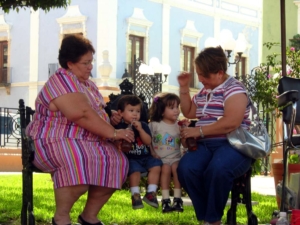 Toward the end of 2021,
Toward the end of 2021, 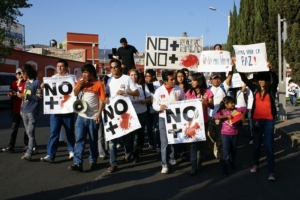 Since the Mexican government declared war against drug cartels in 2006, nationwide violence between cartels, police and the military has been taking a steep toll. The
Since the Mexican government declared war against drug cartels in 2006, nationwide violence between cartels, police and the military has been taking a steep toll. The 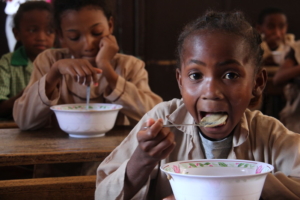 The COVID-19 pandemic forced schools across West Africa to shutter their doors. These widespread school closures had a deleterious effect on the education and well-being of western Africa’s most vulnerable children. Youth were not only deprived of an education but also a chance to receive a meal through their country’s school feeding program. As schools gradually reopened as COVID-19 rates subsided, school feeding in West Africa provided an avenue for children to
The COVID-19 pandemic forced schools across West Africa to shutter their doors. These widespread school closures had a deleterious effect on the education and well-being of western Africa’s most vulnerable children. Youth were not only deprived of an education but also a chance to receive a meal through their country’s school feeding program. As schools gradually reopened as COVID-19 rates subsided, school feeding in West Africa provided an avenue for children to  In late June 2022, the CDC and FDA approved the emergency use of COVID-19 vaccines for young children such as Pfizer and Moderna for children ages
In late June 2022, the CDC and FDA approved the emergency use of COVID-19 vaccines for young children such as Pfizer and Moderna for children ages 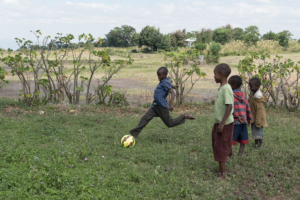 The Chilean poet Pablo Neruda once said that “a child who does not play is not a child.” Play, as defined by the
The Chilean poet Pablo Neruda once said that “a child who does not play is not a child.” Play, as defined by the  Small towns do not often get credits for great deeds, but some of the best things in life come from the most unexpected places. This is the case for the Happy Factory which began in the small town of Cedar City, Utah. What started out as a hobby for the founders after retirement has grown to help children in poverty, children dealing with sickness and children living in the midst of violence. These toys have brought happiness to many when everything else seems so dark. The hope of toys could mean all the world to every child they reach.
Small towns do not often get credits for great deeds, but some of the best things in life come from the most unexpected places. This is the case for the Happy Factory which began in the small town of Cedar City, Utah. What started out as a hobby for the founders after retirement has grown to help children in poverty, children dealing with sickness and children living in the midst of violence. These toys have brought happiness to many when everything else seems so dark. The hope of toys could mean all the world to every child they reach.